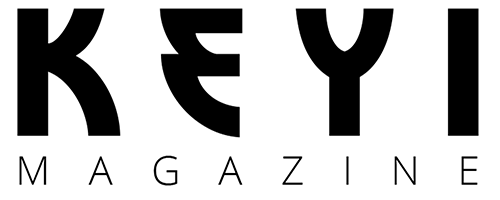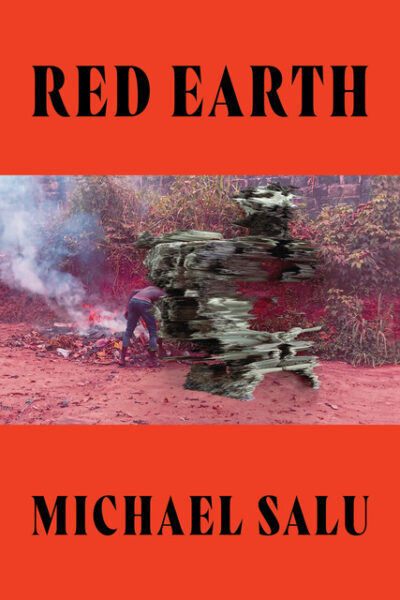
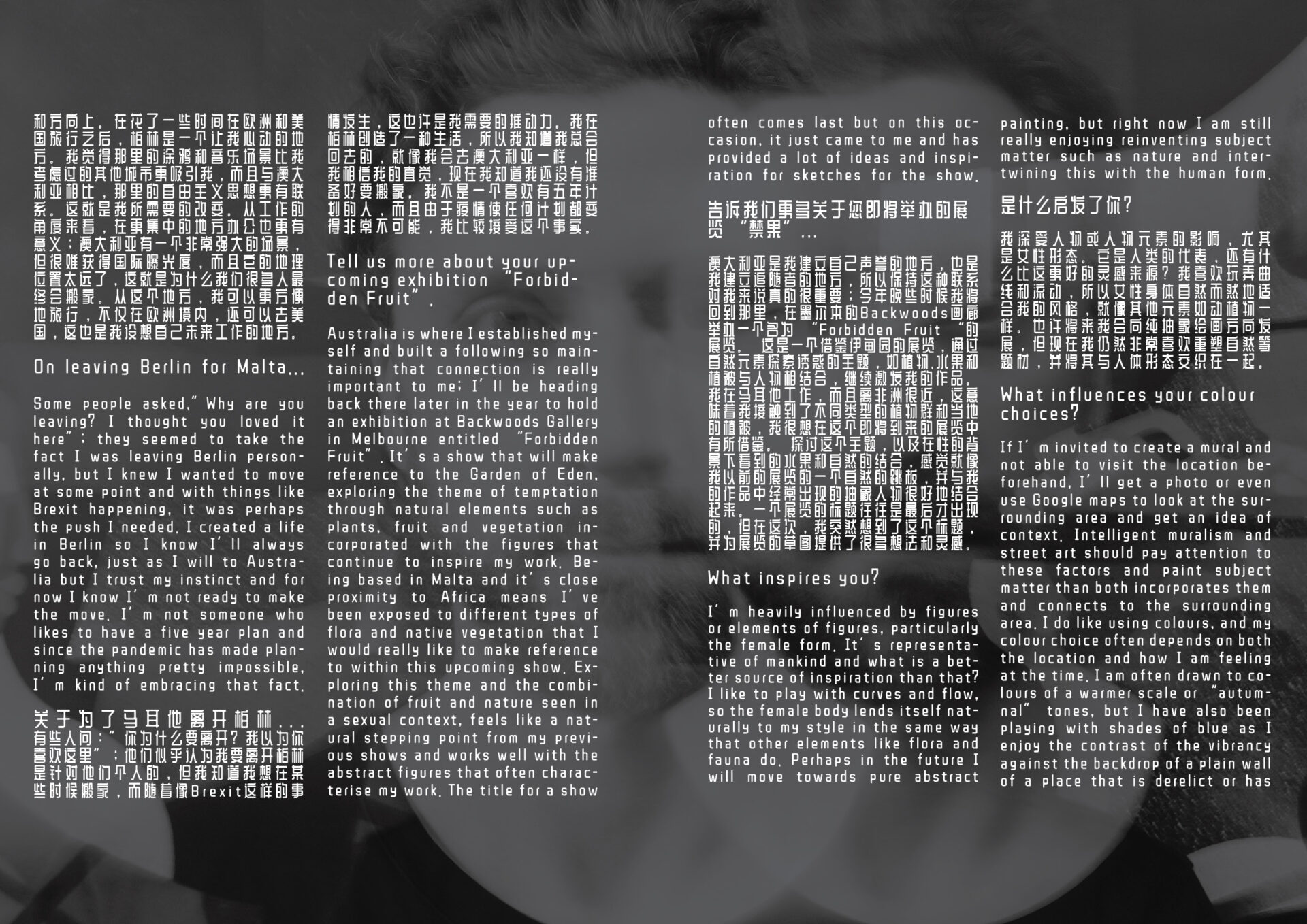
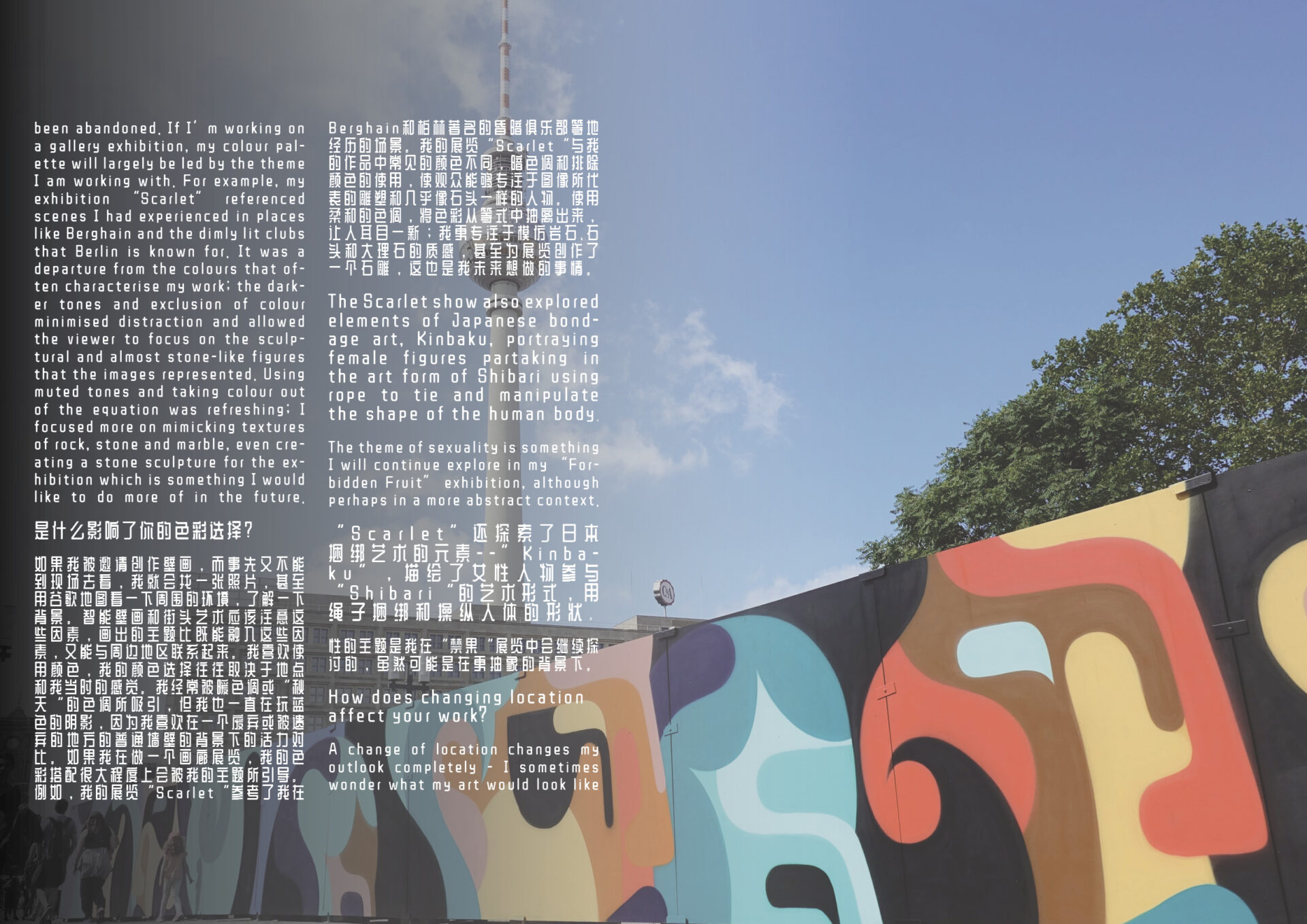
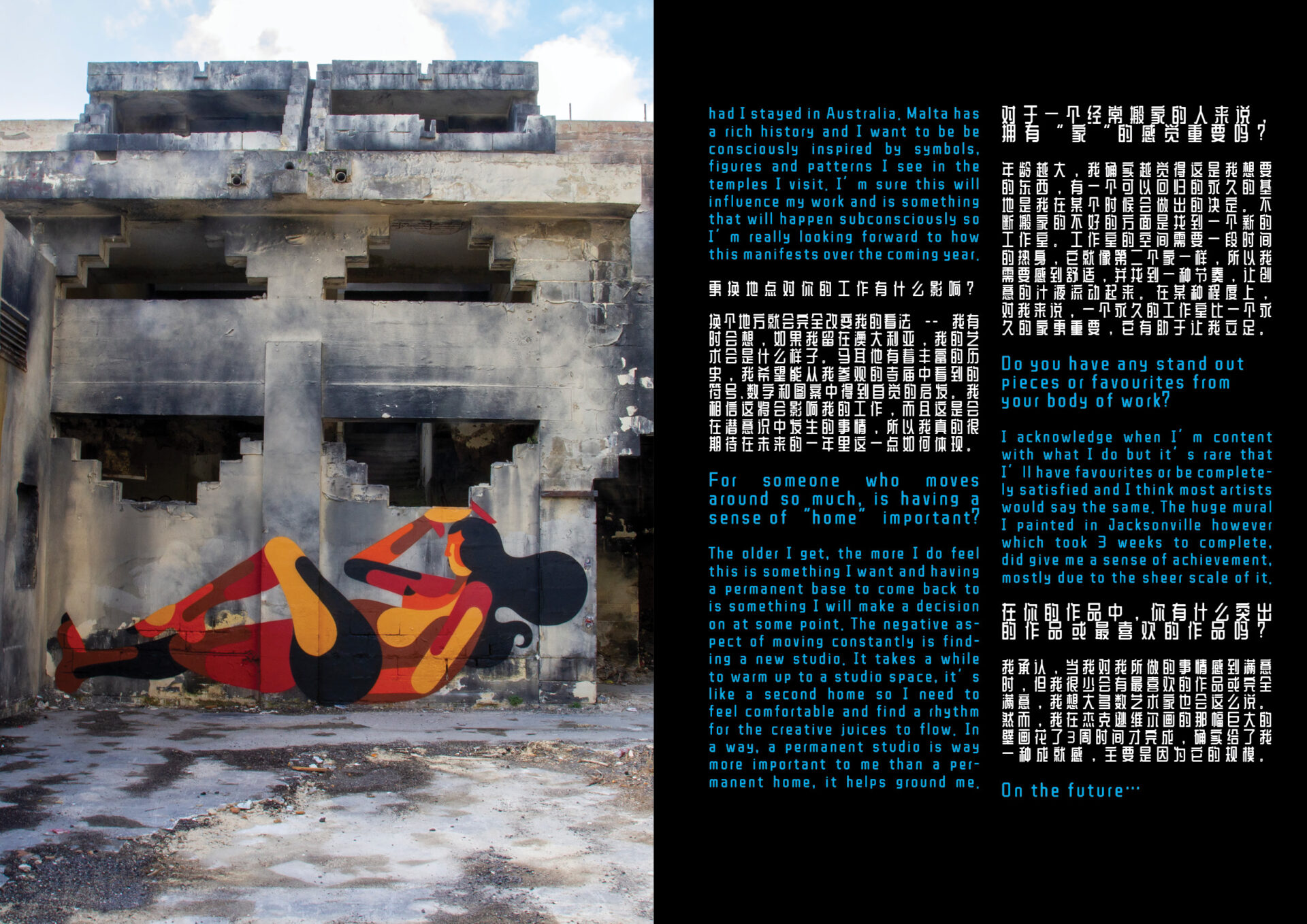
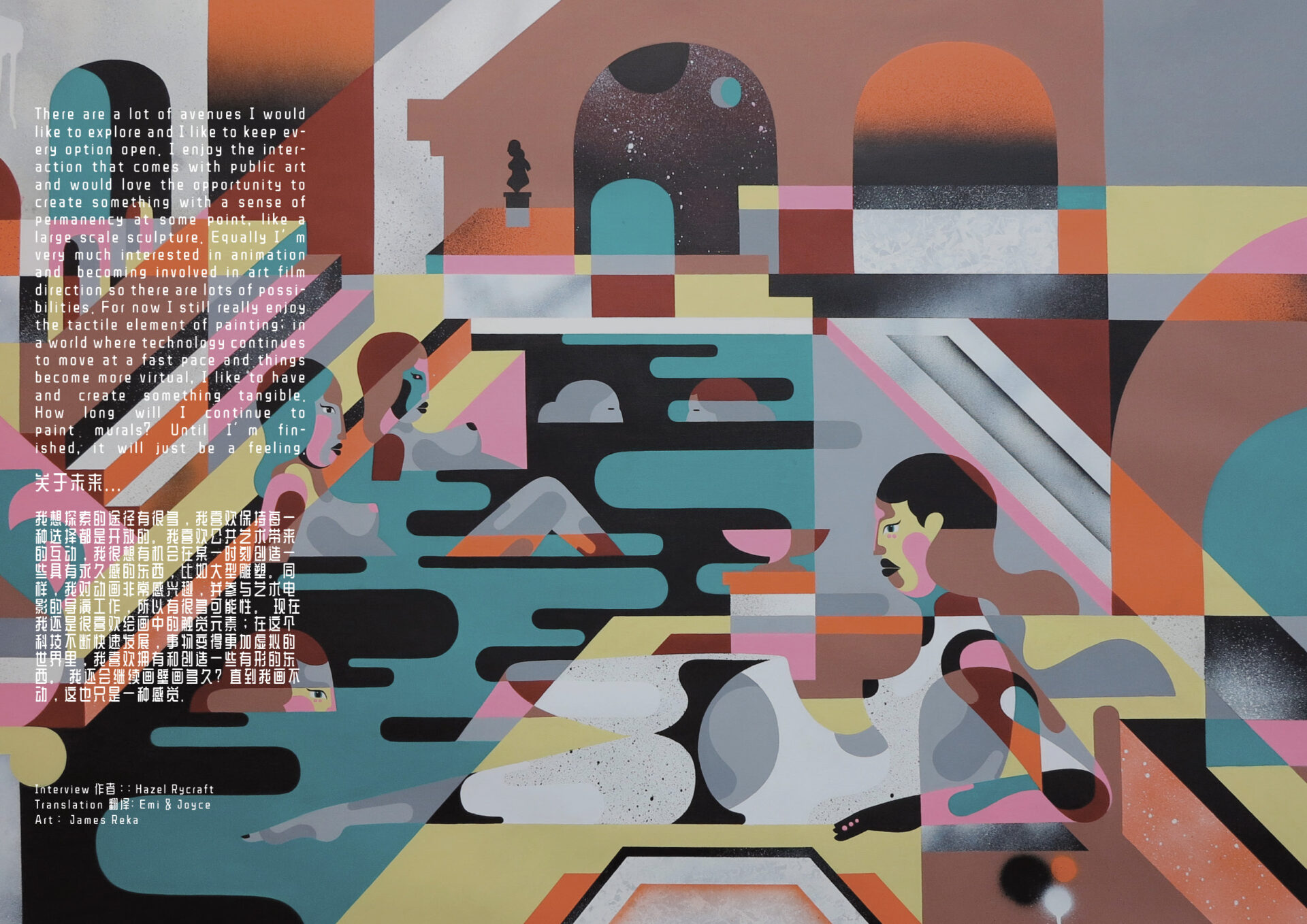
Starting out in Melbourne’s skate and street art scene, artist James Reka sought to make his mark through images of an abstract, often eerie and captivating nature. Influenced by sculpture and the female form, it’s clear to see how these, often intertwined with fragments of a geometric nature, have manifested in his work. The connection to his roots remains strong having established a name for himself in Australia, even having a permanent exhibit of his work in the National Gallery of his homeland which is without doubt a huge accolade for any artist. Choosing to swim against the current, Reka swapped Melbourne for Berlin where he lived for 8 years. Now based in Malta, we wanted to find out what prompted this move, particularly during a global pandemic and of course delve a little deeper into all things art related….
从墨尔本的滑板和街头艺术界开始,艺术家JamesReka试图通过抽象的、经常是诡异的和迷人的图像来建立自己的印记。很明显可以看到,雕塑和女性形态往往与几何性质的碎片交织在一起,在他的作品中得到了体现他与故土的联系依然紧密,他在澳大利亚有自己的声望,甚至在国家美术馆拥有自己作品的永久展览,这对任何艺术家来说无疑是一个巨大的荣誉。Reka选择逆流而上,从墨尔本来到柏林生活了8年。现在常驻在马耳他,我们想知道是什么促使他做出这个举动,特别是在全球疫情期间,当然也想深入了解一下与艺术相关的所有事情….
On moving to Europe…
Travel and experiencing different cultures are the biggest sources of inspiration for my work so I knew that I wanted to relocate at some stage. I like the idea of reinventing myself and giving myself the shock of a new culture to see how that reflects in my work style and direction as I adapt to new settings. After spending some time travelling throughout Europe and the States, Berlin was the place that just sang out to me. I felt particularly drawn to the strong graffiti and music scenes there over other cities I considered and more of a connection to the liberal mindset than that of Australia. That was the change I was in need of. Being based more centrally also just made more sense from a work perspective; Australia has a really strong scene but it’s hard to get international exposure plus it’s so far out geographically which is why a lot of us end up moving. From this part of the world I can travel more easily not only within Europe, but also to the States which is where I envision myself working a lot more in the future.
关于搬到欧洲…
旅行和体验不同的文化是我作品最大的灵感来源,所以我知道我想在某一阶段重新定居。我喜欢重塑自己的想法,给自己一个新文化的冲击,看看当我适应新环境时,如何反映在我的工作风格和方向上。在花了一些时间在欧洲和美国旅行之后,柏林是一个让我心动的地方。我觉得那里的涂鸦和音乐场景比我考虑过的其他城市更吸引我,而且与澳大利亚相比,那里的自由主义思想更有联系。这就是我所需要的改变。从工作的角度来看,在更集中的地方办公也更有意义;澳大利亚有一个非常强大的场景,但很难获得国际曝光度,而且它的地理位置太远了,这就是为什么我们很多人最终会搬家。从这个地方,我可以更方便地旅行,不仅在欧洲境内,还可以去美国,这也是我设想自己未来工作的地方。
On leaving Berlin for Malta…
Some people asked,”Why are you leaving? I thought you loved it here”; they seemed to take the fact I was leaving Berlin personally, but I knew I wanted to move at some point and with things like Brexit happening, it was perhaps the push I needed. I created a life in Berlin so I know I’ll always go back, just as I will to Australia but I trust my instinct and for now I know I’m not ready to make the move. I’m not someone who likes to have a five year plan and since the pandemic has made planning anything pretty impossible, I’m kind of embracing that fact.
关于为了马耳他离开柏林…
有些人问:”你为什么要离开?我以为你喜欢这里”;他们似乎认为我要离开柏林是针对他们个人的,但我知道我想在某些时候搬家,而随着像Brexit这样的事情发生,这也许是我需要的推动力。我在柏林创造了一种生活,所以我知道我总会回去的,就像我会去澳大利亚一样,但我相信我的直觉,现在我知道我还没有准备好要搬家。我不是一个喜欢有五年计划的人,而且由于疫情使任何计划都变得非常不可能,我比较接受这个事实。
Tell us more about your upcoming exhibition “Forbidden Fruit”.
Australia is where I established myself and built a following so maintaining that connection is really important to me; I’ll be heading back there later in the year to hold an exhibition at Backwoods Gallery in Melbourne entitled “Forbidden Fruit”. It’s a show that will make reference to the Garden of Eden, exploring the theme of temptation through natural elements such as plants, fruit and vegetation incorporated with the figures that continue to inspire my work. Being based in Malta and it’s close proximity to Africa means I’ve been exposed to different types of flora and native vegetation that I would really like to make reference to within this upcoming show. Exploring this theme and the combination of fruit and nature seen in a sexual context, feels like a natural stepping point from my previous shows and works well with the abstract figures that often characterise my work. The title for a show often comes last but on this occasion, it just came to me and has provided a lot of ideas and inspiration for sketches for the show.
告诉我们更多关于您即将举办的展览 “禁果”…
澳大利亚是我建立自己声誉的地方,也是我建立追随者的地方,所以保持这种联系对我来说真的很重要;今年晚些时候我将回到那里,在墨尔本的Backwoods画廊举办一个名为 “Forbidden Fruit “的展览。 这是一个借鉴伊甸园的展览,通过自然元素探索诱惑的主题,如植物、水果和植被与人物相结合,继续激发我的作品。我在马耳他工作,而且离非洲很近,这意味着我接触到了不同类型的植物群和当地的植被,我很想在这个即将到来的展览中有所借鉴。 探讨这个主题,以及在性的背景下看到的水果和自然的结合,感觉就像我以前的展览的一个自然的跳板,并与我的作品中经常出现的抽象人物很好地结合起来。一个展览的标题往往是最后才出现的,但在这次,我突然想到了这个标题,并为展览的草图提供了很多想法和灵感。
What inspires you?
I’m heavily influenced by figures or elements of figures, particularly the female form. It’s representative of mankind and what is a better source of inspiration than that? I like to play with curves and flow, so the female body lends itself naturally to my style in the same way that other elements like flora and fauna do. Perhaps in the future I will move towards pure abstract painting, but right now I am still really enjoying reinventing subject matter such as nature and intertwining this with the human form.
是什么启发了你?
我深受人物或人物元素的影响,尤其是女性形态。它是人类的代表,还有什么比这更好的灵感来源?我喜欢玩弄曲线和流动,所以女性身体自然而然地适合我的风格,就像其他元素如动植物一样。也许将来我会向纯抽象绘画方向发展,但现在我仍然非常喜欢重塑自然等题材,并将其与人体形态交织在一起。
What influences your colour choices?
If I’m invited to create a mural and not able to visit the location beforehand, I’ll get a photo or even use Google maps to look at the surrounding area and get an idea of context. Intelligent muralism and street art should pay attention to these factors and paint subject matter than both incorporates them and connects to the surrounding area. I do like using colours, and my colour choice often depends on both the location and how I am feeling at the time. I am often drawn to colours of a warmer scale or “autumnal” tones, but I have also been playing with shades of blue as I enjoy the contrast of the vibrancy against the backdrop of a plain wall of a place that is derelict or has been abandoned. If I’m working on a gallery exhibition, my colour palette will largely be led by the theme I am working with. For example, my exhibition “Scarlet” referenced scenes I had experienced in places like Berghain and the dimly lit clubs that Berlin is known for. It was a departure from the colours that often characterise my work; the darker tones and exclusion of colour minimised distraction and allowed the viewer to focus on the sculptural and almost stone-like figures that the images represented. Using muted tones and taking colour out of the equation was refreshing; I focused more on mimicking textures of rock, stone and marble, even creating a stone sculpture for the exhibition which is something I would like to do more of in the future.
是什么影响了你的色彩选择?
如果我被邀请创作壁画,而事先又不能到现场去看,我就会找一张照片,甚至用谷歌地图看一下周围的环境,了解一下背景。智能壁画和街头艺术应该注意这些因素,画出的主题比既能融入这些因素,又能与周边地区联系起来。我喜欢使用颜色,我的颜色选择往往取决于地点和我当时的感觉。我经常被暖色调或“秋天“的色调所吸引,但我也一直在玩蓝色的阴影,因为我喜欢在一个废弃或被遗弃的地方的普通墙壁的背景下的活力对比。如果我在做一个画廊展览,我的色彩搭配很大程度上会被我的主题所引导。例如,我的展览“Scarlet“参考了我在Berghain和柏林著名的昏暗俱乐部等地经历的场景。我的展览“Scarlet“与我的作品中常见的颜色不同,暗色调和排除颜色的使用,使观众能够专注于图像所代表的雕塑和几乎像石头一样的人物。使用柔和的色调,将色彩从等式中抽离出来,让人耳目一新;我更专注于模仿岩石、石头和大理石的质感,甚至为展览创作了一个石雕,这也是我未来想做的事情。
The Scarlet show also explored elements of Japanese bondage art, Kinbaku, portraying female figures partaking in the art form of Shibari using rope to tie and manipulate the shape of the human body.
The theme of sexuality is something I will continue explore in my “Forbidden Fruit” exhibition, although perhaps in a more abstract context.
“Scarlet”还探索了日本捆绑艺术的元素–”Kinbaku”,描绘了女性人物参与 “Shibari“的艺术形式,用绳子捆绑和操纵人体的形状。
性的主题是我在“禁果“展览中会继续探讨的,虽然可能是在更抽象的背景下。
How does changing location affect your work?
A change of location changes my outlook completely – I sometimes wonder what my art would look like had I stayed in Australia. Malta has a rich history and I want to be be consciously inspired by symbols, figures and patterns I see in the temples I visit. I’m sure this will influence my work and is something that will happen subconsciously so I’m really looking forward to how this manifests over the coming year.
更换地点对你的工作有什么影响?
换个地方就会完全改变我的看法 — 我有时会想,如果我留在澳大利亚,我的艺术会是什么样子。马耳他有着丰富的历史,我希望能从我参观的寺庙中看到的符号、数字和图案中得到自觉的启发。我相信这将会影响我的工作,而且这是会在潜意识中发生的事情,所以我真的很期待在未来的一年里这一点如何体现。
For someone who moves around so much, is having a sense of “home” important?
The older I get, the more I do feel this is something I want and having a permanent base to come back to is something I will make a decision on at some point. The negative aspect of moving constantly is finding a new studio. It takes a while to warm up to a studio space, it’s like a second home so I need to feel comfortable and find a rhythm for the creative juices to flow. In a way, a permanent studio is way more important to me than a permanent home, it helps ground me.
对于一个经常搬家的人来说,拥有“家“的感觉重要吗?
年龄越大,我确实越觉得这是我想要的东西,有一个可以回归的永久的基地是我在某个时候会做出的决定。不断搬家的不好的方面是找到一个新的工作室。工作室的空间需要一段时间的热身,它就像第二个家一样,所以我需要感到舒适,并找到一种节奏,让创意的汁液流动起来。在某种程度上,对我来说,一个永久的工作室比一个永久的家更重要,它有助于让我立足。
Do you have any stand out pieces or favourites from your body of work?
I acknowledge when I’m content with what I do but it’s rare that I’ll have favourites or be completely satisfied and I think most artists would say the same. The huge mural I painted in Jacksonville however which took 3 weeks to complete, did give me a sense of achievement, mostly due to the sheer scale of it.
在你的作品中,你有什么突出的作品或最喜欢的作品吗?
我承认,当我对我所做的事情感到满意时,但我很少会有最喜欢的作品或完全满意,我想大多数艺术家也会这么说。然而,我在杰克逊维尔画的那幅巨大的壁画花了3周时间才完成,确实给了我一种成就感,主要是因为它的规模。
On the future…
There are a lot of avenues I would like to explore and I like to keep every option open. I enjoy the interaction that comes with public art and would love the opportunity to create something with a sense of permanency at some point, like a large scale sculpture. Equally I’m very much interested in animation and becoming involved in art film direction so there are lots of possibilities. For now I still really enjoy the tactile element of painting; in a world where technology continues to move at a fast pace and things become more virtual, I like to have and create something tangible.
How long will I continue to paint murals? Until I’m finished, it will just be a feeling.
关于未来…
我想探索的途径有很多,我喜欢保持每一种选择都是开放的。我喜欢公共艺术带来的互动,我很想有机会在某一时刻创造一些具有永久感的东西,比如大型雕塑。同样,我对动画非常感兴趣,并参与艺术电影的导演工作,所以有很多可能性。 现在我还是很喜欢绘画中的触觉元素;在这个科技不断快速发展,事物变得更加虚拟的世界里,我喜欢拥有和创造一些有形的东西。 我还会继续画壁画多久?直到我画不动,这也只是一种感觉.
Interview 作者:: Hazel Rycraft
Art: James Reka


